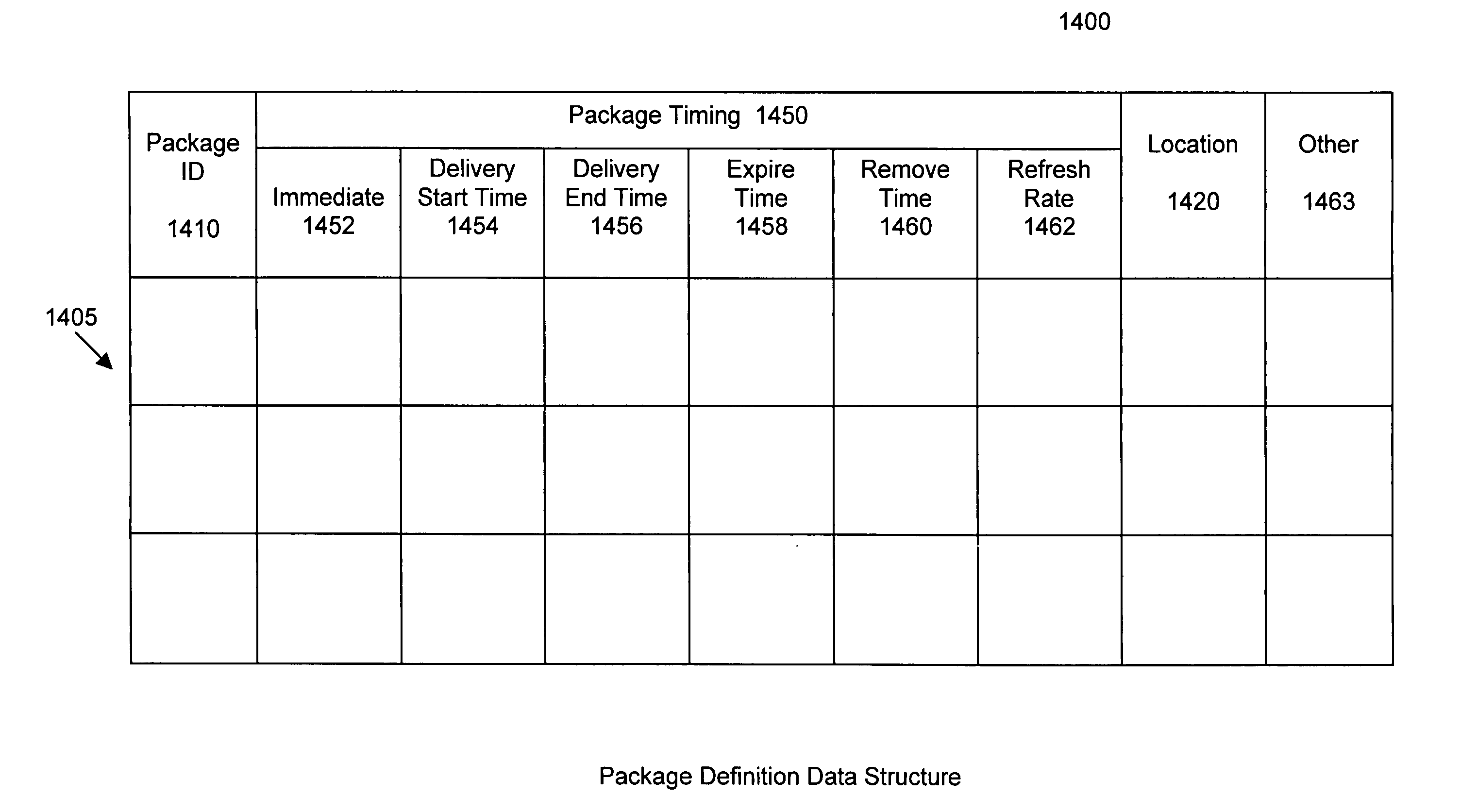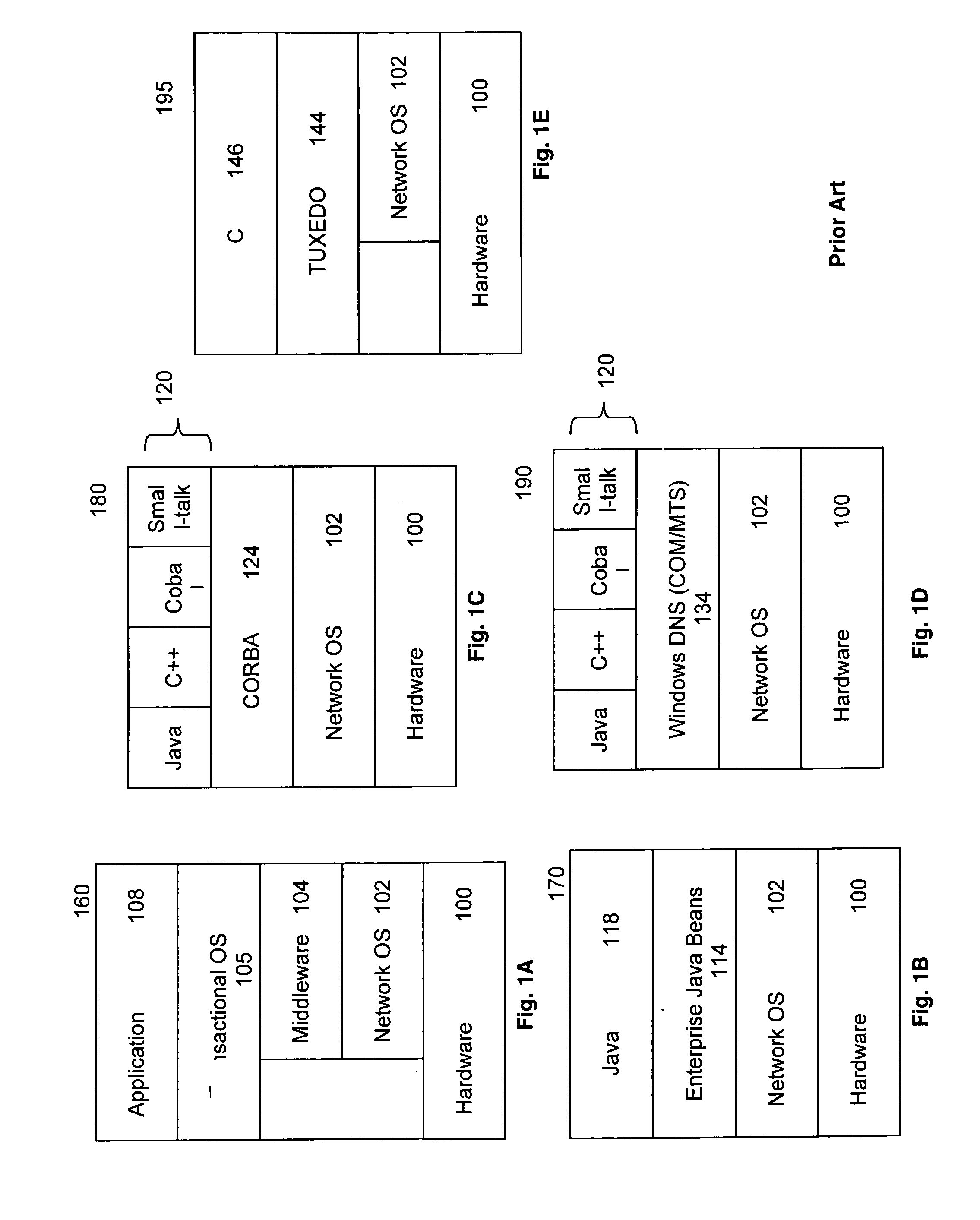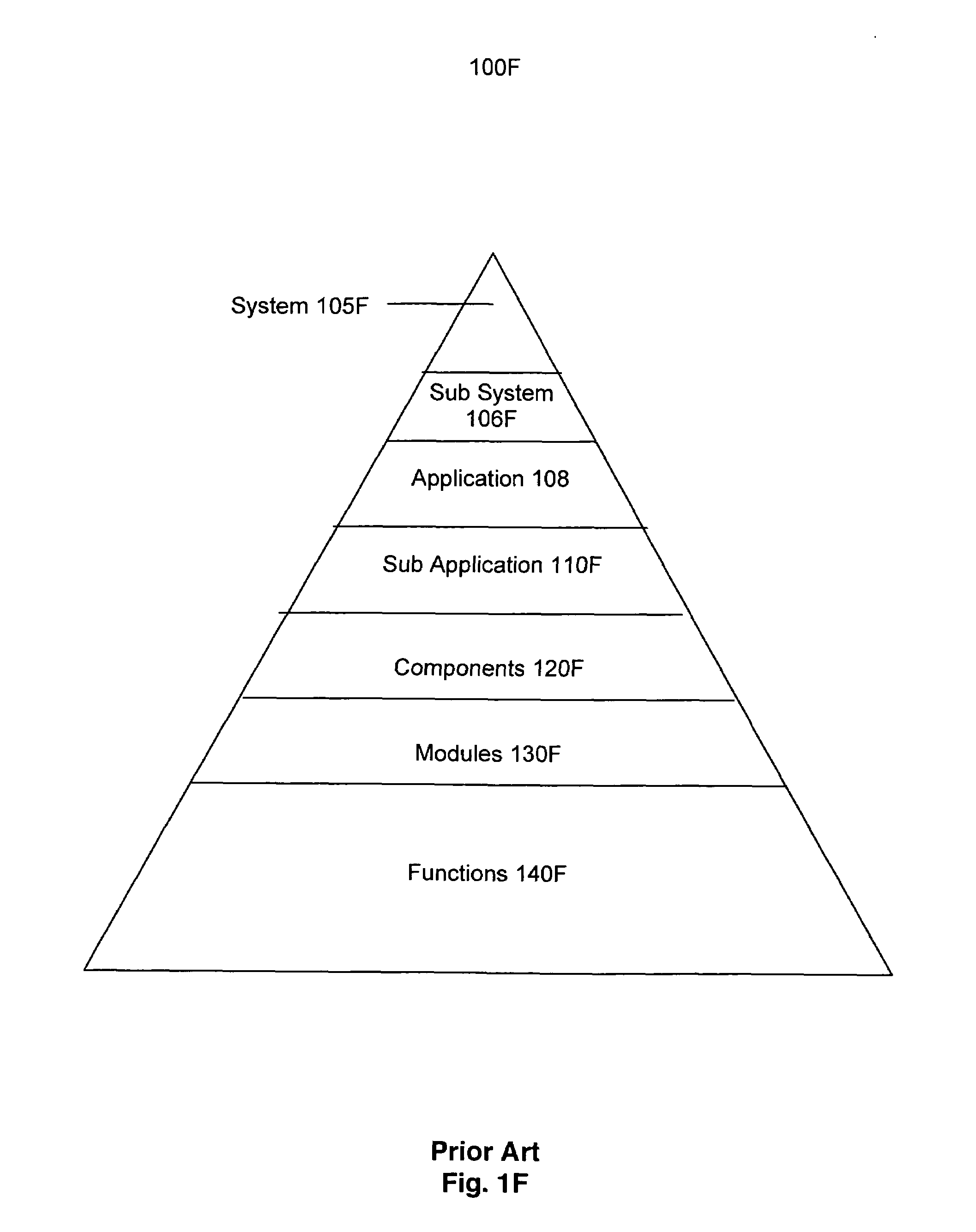Method and system for deploying an asset over a multi-tiered network
a multi-tiered network and asset technology, applied in the field of multi-tiered network asset deployment, can solve the problems of system inability to tolerate noise or spurious signals on the network, delays in receiving data from one or more processors, and failures of distributed programming
- Summary
- Abstract
- Description
- Claims
- Application Information
AI Technical Summary
Benefits of technology
Problems solved by technology
Method used
Image
Examples
Embodiment Construction
[0308]In an example embodiment of the present invention, a subapplication (hereinafter also referred to as a “package”) of a larger parent application, such as, for example, an Enterprise Information System (“EIS”), may be distributed and / or transformed over two or more tiers (discussed below) of a communications network. According to this embodiment, after the distribution and / or transformation of the package, the package may be distributed, cached, and / or executed on one or more target computer nodes. As discussed below, a computer node may be targeted by computer and / or other related hardware, the software environment, and / or platform (e.g., computer and / or network operating system).
[0309]The example embodiment of the present invention may organize all or part of an application into one or more packages because packages may be more easily and rapidly distributed over a communications network than the entire application from which the package originates. Package distribution over ...
PUM
 Login to View More
Login to View More Abstract
Description
Claims
Application Information
 Login to View More
Login to View More - R&D
- Intellectual Property
- Life Sciences
- Materials
- Tech Scout
- Unparalleled Data Quality
- Higher Quality Content
- 60% Fewer Hallucinations
Browse by: Latest US Patents, China's latest patents, Technical Efficacy Thesaurus, Application Domain, Technology Topic, Popular Technical Reports.
© 2025 PatSnap. All rights reserved.Legal|Privacy policy|Modern Slavery Act Transparency Statement|Sitemap|About US| Contact US: help@patsnap.com



